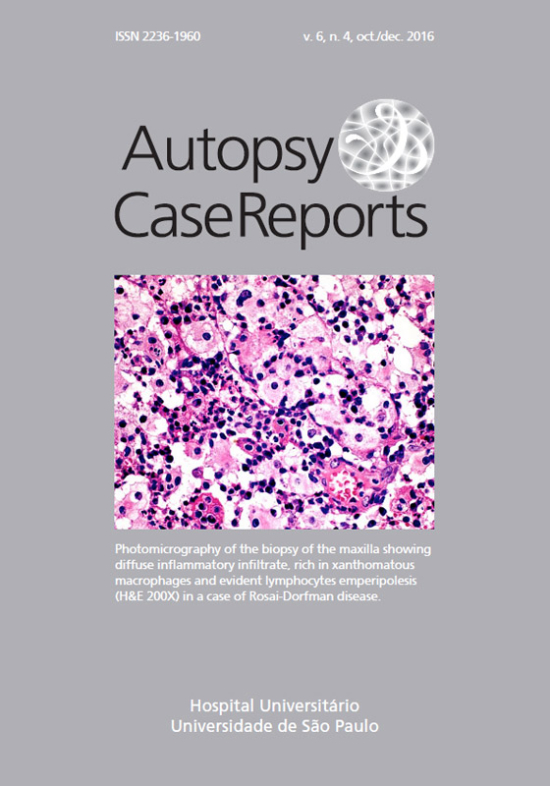Endobronchial solitary fibrous tumor
DOI:
https://doi.org/10.4322/acr.2016.053Keywords:
Solitary Fibrous Tumors, Bronchi, Immunohistochemistry, Lung Neoplasms, PathologyAbstract
Solitary fibrous tumor (SFT) is a mesenchymal neoplasm that appears primarily in the pleura and rarely in intrapulmonary or endobronchial topography. The authors report the case of a 47-year-old woman who presented obstructive respiratory symptoms for 4 years. The chest computed tomography and bronchoscopy showed an obstructive polypoid lesion located between the trachea and the left main bronchus associated with distal atelectasis of the left lung. A resection of the lesion was performed and, macroscopically, the mass was oval, encapsulated, and firm, measuring 2.3 × 1.7 × 1.5 cm. Histology revealed low-grade mesenchymal spindle cell neoplasm, with alternating cellularity, myxoid areas, and mature adipose tissue outbreaks, as well as blood vessels with irregular walls. The immunohistochemical study was positive for CD34, CD99, and BCL2. The diagnosis was SFT in an unusual topography. The patient’s symptoms remitted after tumor excision, and no systemic problems were evident. SFTs primarily affect adults and often follow a benign course; however, their behavior is unpredictable. The presence of necrosis and mitotic activity may portend a poor prognosis. Endobronchial SFTs are rare but should be evaluated and monitored similar to SFTs at other sites, with a long-term follow-upDownloads
Download data is not yet available.
Downloads
Published
2016-12-11
Issue
Section
Article / Clinical Case Report
License
Copyright
Authors of articles published by Autopsy and Case Report retain the copyright of their work without restrictions, licensing it under the Creative Commons Attribution License - CC-BY, which allows articles to be re-used and re-distributed without restriction, as long as the original work is correctly cited.
How to Cite
Oliveira, C. C., Moraes, M. P. T. de, Colby, T., Oliveira, G. F., Hasimoto, E. N., Cataneo, D. C., Cataneo, A. J. M., & De Faveri, J. (2016). Endobronchial solitary fibrous tumor. Autopsy and Case Reports, 6(4), 35-40. https://doi.org/10.4322/acr.2016.053



